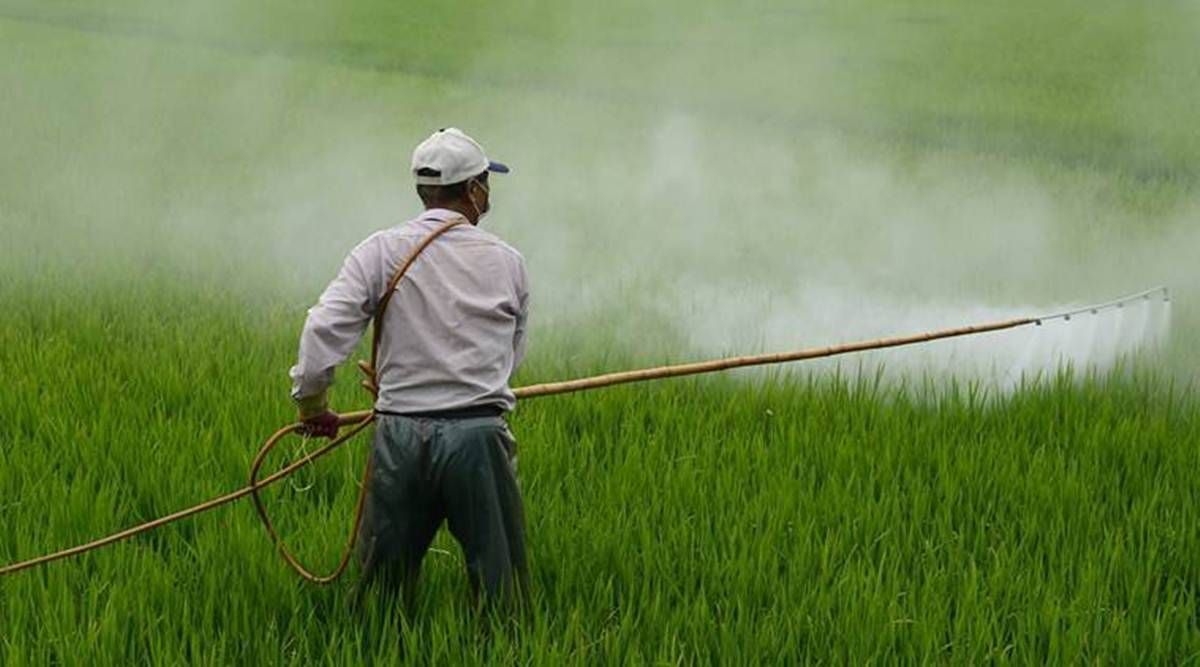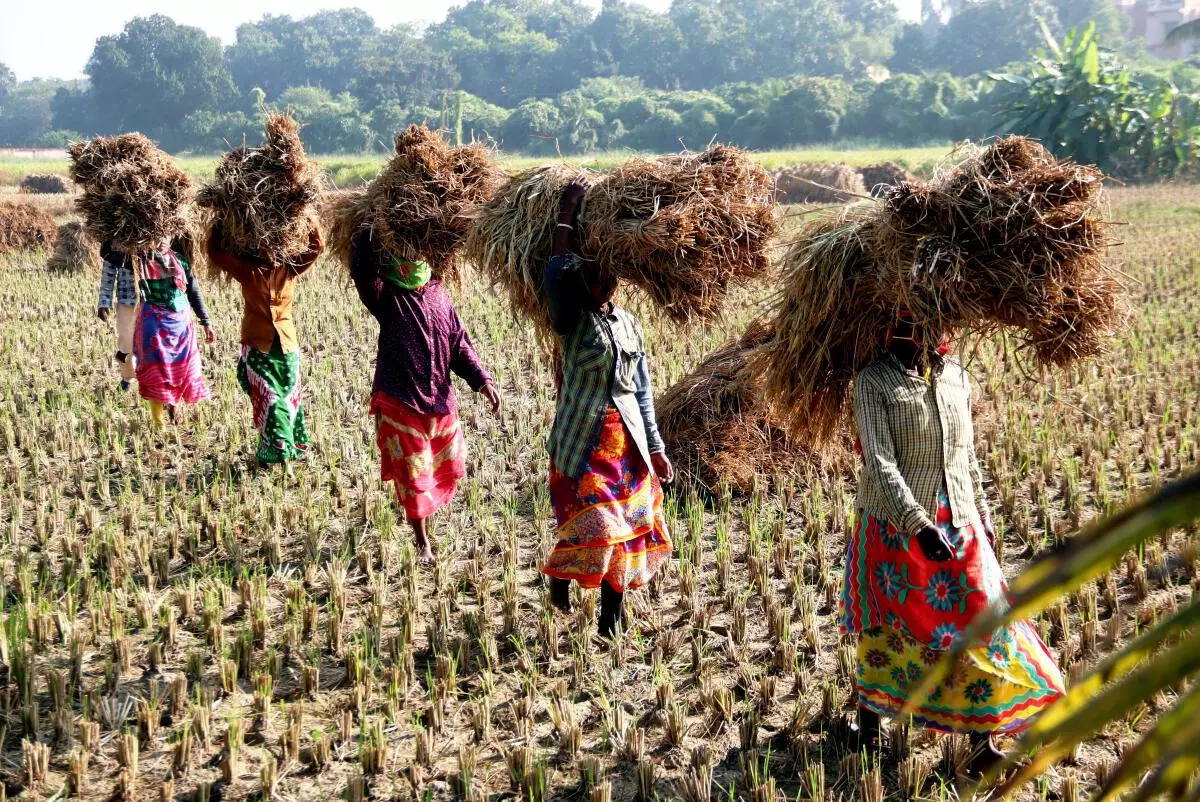90% Sowing Complete: Kharif Sowing Just Above Year-Ago Level in 2023

90% Sowing Complete: Kharif Sowing Just Above Year-Ago Level in 2023
The area planted with kharif crops was only over last year’s level as of Friday, with only a week left till sowing is finished. So far, 90% of the typical seeded area, or 97.9 million hectares (MH), has been covered by Kharif crops. This is an increase of 0.75% over the previous year, whereas a week before, it had increased by 0.41%.
According to an agricultural ministry official, “In the next two weeks, sowing activities are expected to be finished as major parts of the country have received adequate monsoon rainfall.” The Indian Meteorological Department (IMD) has forecast “below-normal” rainfall for August, following a surplus in July. According to authorities, this may affect the output of crops, including rice, pulses, oilseeds, cotton, and sugarcane.

Paddy transplanting is now up 4.7% year over year (y-o-y) due to the prolonged, intense rain that has fallen in the nation’s northwest, central, and southern regions in recent weeks. The deficit last month was 9.8%. Rice has been transplanted on 32.8 MH, or 82% of the typical sowed area. Crop harvesting will start on October 1 when the following two weeks of sowing are complete.
Currently, only Rayalaseema (-24%), Jharkhand (-36%), Bihar (-32%), West Bengal (-29), and eastern Uttar Pradesh (-29%), along with some insufficient rains are reported. Telangana, Chhattisgarh, and Odisha, the other central paddy-producing states, have all received sufficient rainfall during the past two weeks.
Tur, urad, and moong are three pulses whose sowing is currently 7.9% behind last year’s pace, while the area planted with oilseeds, including groundnut, soybean, and sunflower, is slightly behind. The area planted with coarse cereals, including maize, bajra, and ragi, is up 2.1% yearly compared to the 1.5% increase in sugarcane planting.

While the area planted with sugarcane is up 1.5% yearly, cotton sowing is below the previous year’s level. It represents a 15% rise above the average of the last five years.
IMD claims that up until Friday, monsoon rainfall was at a “normal” level, falling only 1% short of the benchmark long-period average (LPA). According to the met department, average or above-average rainfall has already been recorded in 66% of the nation’s 717 districts. Drizzle in the remaining 256 districts needs to be more extensive and sparse.
Rainfall in the southern peninsula is still 8% below LPA. The regions of northwest and central India have gotten 16% and 4% more rain than the average.
The government increased the minimum support prices (MSP) of important Kharif crops for the 2023–24 season (July–June) by 6–10.4% in June, which was the most extraordinary rise since 2018–19. The fixed MSP for paddy is $2,183 per quintal, up 7% from the previous year. According to the agricultural ministry, India’s foodgrain output increased 5% yearly to a new record of 330.5 MT for the 2022–23 crop year.
As the Kharif season peaks, reports indicate that sowing has been completed for around 90% of the total cropped area. This is a significant milestone, showcasing a slight increase from the year-ago level. The progress has provided relief to agricultural economists and policymakers who’ve been closely monitoring the season’s trends, given the importance of Kharif crops to the Indian economy.
Kharif season is one of the two cropping patterns in the Indian subcontinent, the other being the Rabi season. The Kharif season starts with the onset of the monsoon and ends with its retreat, typically between June and September. Major crops cultivated during this season include rice, maize, sorghum, pearl millet, finger millet, arhar (tur), urad, moong, cotton, jowar, bajra, and more.
The fact that the sowing this year is slightly above the year-ago level offers insight into the resilience of the agricultural sector. The primary factors driving this increase include:
- Timely Onset of Monsoons:2023 witnessed a more predictable monsoon onset. This allowed farmers to prepare and sow their fields on schedule.
- Improved Seed Distribution: Measures have been undertaken to ensure farmers access high-quality seeds, enhancing the likelihood of better yields.
- Government Initiatives: Increased efforts in promoting technological interventions, soil health cards, and irrigation facilities have aided farmers in sowing activities.
However, it’s crucial to acknowledge that some areas faced challenges due to inconsistent rainfall patterns and local issues that might have marginally hindered the sowing process.

The Kharif season, given its vast expanse, plays a pivotal role in the Indian agricultural economy.
A successful Kharif crop guarantees staple food supplies for a significant portion of the country. Surplus production could open doors for exporting certain commodities, boosting foreign exchange reserves. Many industries, including textiles and food processing, rely on Kharif crops for raw materials. Increased sowing can ensure a steady supply chain for these industries.
A prolonged monsoon or an early retreat can impact the maturity and harvesting of the crops. The threat of pest attacks, like locusts, is always a concern. Even with a good yield, improper storage and logistical challenges can lead to post-harvest losses.
The slight increase in Kharif sowing in 2023 compared to the previous year is a positive sign for India’s agricultural sector. While challenges persist, the resilience shown by farmers and the supportive role of the government and technology can set the tone for a successful harvest. As we await the end of the season, hopes remain high for a bumper crop that could reinvigorate the economy in the wake of the challenges of the past few years.




